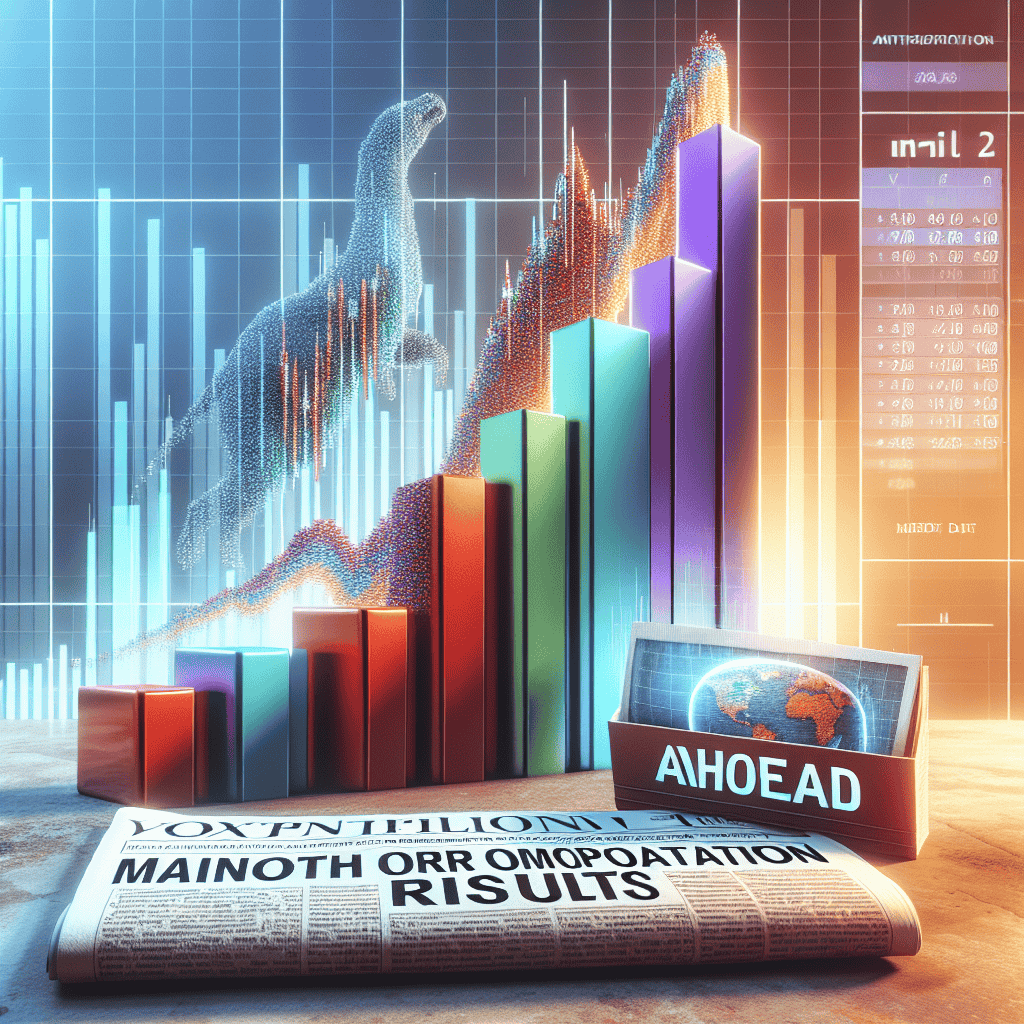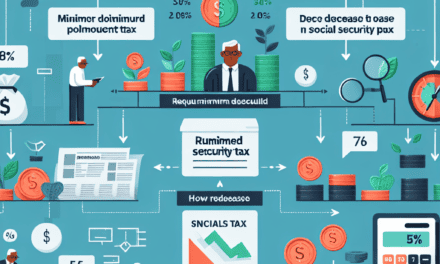“Anticipate the Surge: Navigating Megacap Earnings and US Election Waves”
Introduction
Futures markets are showing signs of optimism as investors brace for a pivotal week marked by the release of earnings reports from major technology companies and the upcoming U.S. elections. The anticipation surrounding these events is driving market sentiment, with traders closely monitoring how the outcomes could influence economic policies and corporate performance. The earnings reports from megacap companies, which include industry giants with substantial market capitalizations, are particularly significant as they often set the tone for the broader market. Meanwhile, the U.S. elections add another layer of complexity, with potential implications for fiscal policy, regulatory changes, and international relations. As these developments unfold, market participants are poised to navigate the potential volatility and opportunities that lie ahead.
Impact Of Megacap Earnings On Market Trends
As investors keenly anticipate the release of megacap earnings, the financial markets are poised for potential shifts that could redefine current trends. The term “megacap” refers to companies with exceptionally large market capitalizations, often exceeding $200 billion. These corporations, which include tech giants like Apple, Microsoft, and Amazon, wield significant influence over market indices due to their substantial weightings. Consequently, their earnings reports are not merely reflections of individual company performance but are also indicative of broader economic health and investor sentiment.
The anticipation surrounding these earnings is palpable, as they often set the tone for market movements in the subsequent weeks. Investors scrutinize these reports for insights into revenue growth, profit margins, and future guidance. A positive earnings surprise from these companies can bolster investor confidence, leading to a rally in stock prices. Conversely, disappointing results can trigger sell-offs, as investors reassess their risk exposure. Thus, the impact of megacap earnings on market trends is profound, often dictating the direction of major indices such as the S&P 500 and the Nasdaq Composite.
In addition to earnings, the timing of these reports coincides with the upcoming U.S. election, adding another layer of complexity to market dynamics. Historically, elections have been periods of heightened volatility, as markets react to potential policy changes and shifts in political power. The intersection of megacap earnings and the election creates a unique environment where investors must navigate both corporate performance and political developments. This dual focus requires a nuanced understanding of how these factors interplay to influence market sentiment.
Moreover, the current economic landscape, characterized by inflationary pressures and interest rate uncertainties, further complicates the picture. Central banks worldwide are grappling with the challenge of curbing inflation without stifling economic growth. In this context, megacap companies’ earnings provide valuable insights into how businesses are managing cost pressures and supply chain disruptions. Investors are particularly interested in how these companies are leveraging their scale and resources to maintain profitability in a challenging environment.
As futures rise ahead of these pivotal earnings reports, market participants are also considering the potential implications for sector rotation. In recent years, there has been a notable shift from growth-oriented stocks, such as those in the technology sector, to value stocks, which are perceived as more resilient in a rising interest rate environment. The performance of megacap companies could either reinforce or challenge this trend, depending on their ability to deliver robust earnings growth.
Furthermore, the global nature of these megacap companies means that their earnings have implications beyond U.S. borders. As multinational corporations, their performance is often a barometer for global economic conditions. Investors worldwide are therefore attuned to these earnings reports, as they provide clues about international demand and economic resilience.
In conclusion, the forthcoming megacap earnings reports are set to play a crucial role in shaping market trends. As investors navigate the confluence of corporate performance, political developments, and macroeconomic factors, the insights gleaned from these earnings will be instrumental in guiding investment strategies. The interplay between these elements underscores the complexity of the current market environment, highlighting the need for a comprehensive approach to understanding and responding to evolving market dynamics.
US Election Influence On Futures Market
As the financial world braces for a pivotal week, futures markets are showing signs of optimism, buoyed by the anticipation of earnings reports from megacap companies and the looming U.S. election. The interplay between these two significant events is creating a dynamic environment for investors, who are keenly observing how political and corporate developments will shape market trajectories. The U.S. election, a cornerstone of democratic engagement, invariably exerts a profound influence on financial markets. Investors are acutely aware that the policies and priorities of the incoming administration can have far-reaching implications for economic growth, regulatory landscapes, and fiscal strategies. Consequently, futures markets often react to election-related news, as traders attempt to position themselves advantageously in anticipation of potential policy shifts.
In the lead-up to the election, market participants are particularly focused on key sectors that could be impacted by the outcome. For instance, healthcare, energy, and technology are areas where policy changes could significantly alter the business environment. As such, futures tied to these sectors may experience heightened volatility as investors digest polling data and campaign rhetoric. Moreover, the election’s outcome could influence the Federal Reserve’s monetary policy stance, further affecting market sentiment. While the election captures much of the spotlight, the earnings season for megacap companies adds another layer of complexity to the market landscape. These corporate giants, which include the likes of Apple, Amazon, and Microsoft, wield substantial influence over market indices due to their sheer size and economic impact. As these companies report their financial performance, investors will scrutinize their results for insights into broader economic trends and consumer behavior.
The earnings reports are expected to provide valuable information on how these companies are navigating current challenges, such as supply chain disruptions and inflationary pressures. Positive earnings surprises could bolster investor confidence, leading to a rally in futures markets. Conversely, disappointing results might trigger a reassessment of market valuations, prompting a more cautious approach among traders. The convergence of these two events—the U.S. election and megacap earnings—creates a unique environment where market participants must weigh political uncertainties against corporate performance metrics. This dual focus requires a nuanced understanding of both macroeconomic factors and individual company dynamics. Investors are likely to adopt a cautious yet opportunistic stance, seeking to capitalize on short-term market movements while remaining mindful of longer-term trends.
In this context, futures markets serve as a barometer of investor sentiment, reflecting the collective expectations and anxieties of market participants. As traders analyze the potential outcomes of the election and earnings reports, futures prices may exhibit increased volatility, offering both risks and opportunities for those willing to navigate the complexities of the current market environment. Ultimately, the interplay between the U.S. election and megacap earnings underscores the interconnectedness of political and economic forces in shaping financial markets. As investors await the unfolding of these events, they remain vigilant, ready to adjust their strategies in response to new information and shifting market dynamics. The coming weeks promise to be a critical period for futures markets, as the outcomes of these events will likely set the tone for the remainder of the year and beyond.
Analyzing Market Volatility During Earnings Season
As the financial markets brace for a period of heightened activity, futures are on the rise, driven by anticipation surrounding the upcoming megacap earnings reports and the looming U.S. election. This confluence of events is poised to inject a significant degree of volatility into the markets, a phenomenon that investors and analysts are keenly observing. Understanding the dynamics at play during this earnings season is crucial for market participants aiming to navigate the potential turbulence effectively.
To begin with, the earnings season is a critical period when publicly traded companies disclose their financial performance for the previous quarter. This disclosure provides investors with insights into a company’s profitability, revenue growth, and overall financial health. In particular, megacap companies, which are characterized by their substantial market capitalizations, often set the tone for the broader market due to their significant influence. As these corporate giants prepare to release their earnings, market participants are closely monitoring their performance, as it can offer valuable clues about the health of the economy and the potential direction of the stock market.
Moreover, the timing of these earnings reports coincides with the U.S. election, adding another layer of complexity to the market landscape. Elections are inherently uncertain events, and their outcomes can have far-reaching implications for economic policy, regulatory environments, and investor sentiment. As a result, the intersection of earnings season and the election cycle creates a unique environment where market volatility is likely to be amplified. Investors are tasked with deciphering not only the financial results of individual companies but also the potential policy shifts that could arise from the election outcome.
In this context, it is essential to consider the role of market sentiment and investor psychology. During periods of uncertainty, market participants often react to news and events with heightened sensitivity, leading to increased price fluctuations. The anticipation of earnings reports and election results can trigger speculative trading, as investors attempt to position themselves advantageously based on their expectations. This speculative behavior can contribute to short-term volatility, as market participants adjust their portfolios in response to new information.
Furthermore, the current economic backdrop adds another dimension to the analysis of market volatility. The global economy is navigating a complex landscape characterized by inflationary pressures, supply chain disruptions, and varying degrees of economic recovery across regions. These factors can influence corporate earnings and investor expectations, further complicating the market’s response to earnings announcements and election developments. As such, investors must remain vigilant and consider a wide range of variables when assessing potential market movements.
In conclusion, the rise in futures ahead of megacap earnings and the U.S. election underscores the intricate interplay between corporate performance, political developments, and market sentiment. As these events unfold, market participants are likely to experience a period of increased volatility, necessitating a careful and informed approach to investment decisions. By closely monitoring earnings reports, election outcomes, and broader economic indicators, investors can better position themselves to navigate the challenges and opportunities that arise during this dynamic period. Ultimately, understanding the factors driving market volatility is essential for making informed investment choices in an ever-evolving financial landscape.
Strategies For Investing Amidst Political Uncertainty

As investors navigate the complex landscape of financial markets, the interplay between corporate earnings and political events often presents both challenges and opportunities. With futures rising ahead of megacap earnings and the impending U.S. election, it becomes crucial for investors to develop strategies that can withstand the volatility associated with political uncertainty. Understanding the dynamics at play and adopting a well-informed approach can help mitigate risks and capitalize on potential gains.
To begin with, it is essential to recognize that political events, such as elections, can significantly impact market sentiment. Historically, markets have exhibited heightened volatility during election periods, as investors grapple with the potential implications of policy changes. This uncertainty can lead to fluctuations in stock prices, making it imperative for investors to remain vigilant and adaptable. One effective strategy is to maintain a diversified portfolio, which can help cushion against sector-specific risks and provide a more stable return profile. By spreading investments across various asset classes and geographies, investors can reduce their exposure to any single political or economic event.
Moreover, focusing on companies with strong fundamentals can serve as a buffer against political turbulence. Megacap companies, often characterized by their robust balance sheets and global reach, tend to be more resilient in the face of uncertainty. These firms typically have the resources to navigate regulatory changes and economic shifts, making them attractive options for investors seeking stability. As earnings reports for these companies are released, investors should pay close attention to management’s guidance and any indications of how they plan to address potential policy changes. This information can provide valuable insights into the company’s ability to adapt and thrive in a changing environment.
In addition to diversification and a focus on fundamentals, investors should also consider the role of macroeconomic indicators in shaping market trends. Economic data, such as employment figures, inflation rates, and GDP growth, can offer clues about the broader economic landscape and its potential impact on corporate earnings. By staying informed about these indicators, investors can better anticipate market movements and adjust their strategies accordingly. For instance, if economic data suggests a slowdown, investors might consider shifting towards defensive sectors, such as utilities or consumer staples, which tend to perform well during periods of economic uncertainty.
Furthermore, it is important for investors to remain disciplined and avoid making impulsive decisions based on short-term market movements. Political events can often lead to knee-jerk reactions in the market, but it is crucial to maintain a long-term perspective. By focusing on their investment goals and adhering to a well-thought-out strategy, investors can avoid the pitfalls of emotional decision-making and stay on course towards achieving their financial objectives.
In conclusion, while political uncertainty can pose challenges for investors, it also presents opportunities for those who are prepared. By adopting a diversified approach, focusing on companies with strong fundamentals, staying informed about macroeconomic indicators, and maintaining discipline, investors can navigate the complexities of the market with confidence. As futures rise ahead of megacap earnings and the U.S. election, these strategies can serve as a valuable guide for investing amidst political uncertainty, helping investors to not only protect their portfolios but also capitalize on potential opportunities.
Key Indicators To Watch In Futures Trading
As investors eagerly anticipate the upcoming megacap earnings reports and the U.S. election, futures markets are experiencing a notable rise. This period is marked by heightened volatility and uncertainty, making it crucial for traders to closely monitor key indicators that can provide insights into market movements. Understanding these indicators can help traders make informed decisions and navigate the complexities of futures trading during such pivotal times.
One of the primary indicators to watch is the economic data releases, which often have a significant impact on market sentiment. Economic indicators such as GDP growth rates, unemployment figures, and consumer confidence indices can provide valuable insights into the overall health of the economy. For instance, stronger-than-expected GDP growth can signal a robust economy, potentially leading to a rise in futures prices. Conversely, disappointing unemployment figures might indicate economic challenges, prompting a cautious approach among traders.
In addition to economic data, central bank policies play a crucial role in shaping futures markets. The Federal Reserve’s monetary policy decisions, including interest rate adjustments and quantitative easing measures, can influence market expectations and investor behavior. Traders should pay close attention to statements from central bank officials, as any hints of policy changes can lead to significant market movements. For example, a hawkish stance from the Federal Reserve might lead to expectations of higher interest rates, impacting futures prices accordingly.
Moreover, geopolitical events and developments can also serve as key indicators in futures trading. The U.S. election, in particular, is a major event that can create uncertainty and volatility in the markets. Traders should be mindful of the potential implications of election outcomes on fiscal policies, trade agreements, and regulatory changes. These factors can have far-reaching effects on various sectors, influencing futures prices in the process. By staying informed about geopolitical developments, traders can better anticipate market reactions and adjust their strategies accordingly.
Another important aspect to consider is corporate earnings reports, especially from megacap companies. These reports provide insights into the financial health and performance of major corporations, which can have a ripple effect on the broader market. Strong earnings results from megacap companies can boost investor confidence and drive futures prices higher. Conversely, disappointing earnings can lead to market sell-offs and increased volatility. Traders should analyze earnings reports in conjunction with other indicators to gain a comprehensive understanding of market dynamics.
Furthermore, technical analysis can be a valuable tool for traders seeking to identify trends and patterns in futures markets. By examining historical price data and chart patterns, traders can gain insights into potential future price movements. Technical indicators such as moving averages, relative strength index (RSI), and Bollinger Bands can help traders identify entry and exit points, as well as potential support and resistance levels. While technical analysis should not be used in isolation, it can complement fundamental analysis and provide additional perspectives on market trends.
In conclusion, as futures markets rise ahead of megacap earnings and the U.S. election, traders must remain vigilant and informed. By closely monitoring key indicators such as economic data releases, central bank policies, geopolitical events, corporate earnings, and technical analysis, traders can navigate the complexities of futures trading with greater confidence. Understanding these indicators and their potential impact on market movements is essential for making informed trading decisions during this period of heightened uncertainty and opportunity.
Historical Trends: Elections And Market Reactions
As investors keenly anticipate the upcoming megacap earnings and the U.S. election, it is instructive to examine historical trends to better understand how these events might influence market behavior. Historically, the intersection of major corporate earnings reports and significant political events, such as presidential elections, has often led to heightened market volatility. This volatility is driven by the uncertainty surrounding potential policy changes and their impact on corporate profitability and economic growth. By analyzing past market reactions to similar scenarios, investors can gain valuable insights into potential future market movements.
Historically, U.S. elections have had a profound impact on market sentiment. The period leading up to an election is often characterized by uncertainty, as investors grapple with the potential implications of a change in administration. This uncertainty can lead to increased market volatility, as investors adjust their portfolios in anticipation of potential policy shifts. For instance, markets may react positively or negatively to the prospect of changes in tax policy, regulatory frameworks, or government spending priorities, depending on the perceived impact on corporate earnings and economic growth.
Moreover, the outcome of an election can have a lasting impact on market trends. Historically, markets have tended to perform well in the year following a presidential election, regardless of which party wins. This phenomenon, often referred to as the “presidential election cycle theory,” suggests that markets are buoyed by the resolution of uncertainty and the implementation of new policies aimed at stimulating economic growth. However, it is important to note that this trend is not guaranteed, and various factors, such as the broader economic environment and geopolitical developments, can influence market performance.
In addition to the election, the release of megacap earnings reports can also significantly impact market dynamics. Megacap companies, due to their substantial market capitalization and influence, often set the tone for broader market trends. Their earnings reports provide critical insights into the health of the economy and consumer demand, as well as the potential impact of external factors such as supply chain disruptions or changes in consumer behavior. Consequently, strong earnings reports from these companies can boost investor confidence and drive market gains, while disappointing results can lead to market declines.
The interplay between megacap earnings and the U.S. election is particularly noteworthy. As these events converge, investors must navigate a complex landscape of potential risks and opportunities. On one hand, strong earnings reports could offset election-related uncertainty, providing a stabilizing force for markets. On the other hand, disappointing earnings or unexpected election outcomes could exacerbate volatility, leading to sharp market swings.
In conclusion, while historical trends provide valuable context for understanding potential market reactions to megacap earnings and the U.S. election, it is essential for investors to remain vigilant and adaptable. By closely monitoring developments and considering a range of potential scenarios, investors can better position themselves to navigate the challenges and opportunities that lie ahead. As always, a well-diversified portfolio and a long-term investment strategy remain crucial in managing risk and achieving financial goals amidst the ever-evolving market landscape.
Balancing Risk And Opportunity In Megacap Stocks
As investors navigate the complex landscape of financial markets, the anticipation surrounding megacap earnings and the upcoming U.S. election has become a focal point for market participants. The futures market, often seen as a barometer of investor sentiment, has shown signs of optimism, with futures rising ahead of these significant events. This optimism, however, is tempered by the inherent risks and opportunities that accompany investments in megacap stocks, which are companies with exceptionally large market capitalizations.
Megacap stocks, such as those in the technology and consumer sectors, have long been the darlings of investors due to their robust growth prospects and dominant market positions. These companies, including household names like Apple, Amazon, and Microsoft, have consistently delivered strong earnings, which in turn have driven their stock prices higher. As these companies prepare to release their latest earnings reports, investors are keenly focused on their performance, as it will provide crucial insights into the health of the broader economy and the resilience of these corporate giants in the face of ongoing challenges.
The upcoming U.S. election adds another layer of complexity to the investment landscape. Historically, elections have been periods of heightened volatility in financial markets, as investors grapple with the potential implications of policy changes and shifts in regulatory environments. The outcome of the election could have significant ramifications for megacap stocks, particularly if there are changes in tax policies or regulations that impact these companies’ operations. Consequently, investors are closely monitoring political developments, seeking to balance the potential risks with the opportunities that may arise from a new administration.
In this context, the rise in futures suggests that investors are cautiously optimistic about the prospects for megacap stocks. This optimism is likely driven by several factors, including expectations of continued strong earnings growth and the belief that these companies are well-positioned to weather any political or economic uncertainties. Moreover, the resilience of megacap stocks during previous periods of market turbulence has reinforced their status as relatively safe havens for investors seeking stability and growth.
However, it is essential for investors to remain vigilant and consider the potential risks associated with megacap stocks. While these companies have demonstrated remarkable resilience, they are not immune to broader market forces or sector-specific challenges. For instance, regulatory scrutiny, particularly in the technology sector, could pose a threat to future growth prospects. Additionally, the concentration of market capitalization in a few megacap stocks raises concerns about market breadth and the potential for increased volatility if these stocks experience significant price fluctuations.
To navigate this complex environment, investors should adopt a balanced approach, weighing the potential rewards of investing in megacap stocks against the associated risks. Diversification remains a key strategy, as it allows investors to spread risk across a broader range of assets and sectors. Furthermore, staying informed about macroeconomic trends, political developments, and company-specific factors will be crucial in making informed investment decisions.
In conclusion, as futures rise ahead of megacap earnings and the U.S. election, investors are presented with both opportunities and challenges. By carefully balancing risk and opportunity, and maintaining a diversified portfolio, investors can position themselves to capitalize on the potential upside while mitigating the risks inherent in this dynamic market environment.
Q&A
1. **What are futures?**
Futures are financial contracts obligating the buyer to purchase, or the seller to sell, an asset at a predetermined future date and price.
2. **What are megacap companies?**
Megacap companies are firms with a market capitalization typically over $200 billion, often including major tech giants like Apple, Microsoft, and Amazon.
3. **Why do futures rise ahead of earnings reports?**
Futures may rise ahead of earnings reports due to investor optimism about strong financial performance, leading to anticipated stock price increases.
4. **How can US elections impact futures markets?**
US elections can impact futures markets by creating uncertainty or optimism about future economic policies, regulatory changes, and fiscal measures.
5. **What role do earnings reports play in market movements?**
Earnings reports provide insights into a company’s financial health and performance, influencing investor sentiment and stock prices.
6. **How do investors use futures in relation to earnings and elections?**
Investors use futures to hedge against potential market volatility or to speculate on market movements based on anticipated earnings and election outcomes.
7. **What factors contribute to market volatility during earnings and elections?**
Market volatility can be driven by unexpected earnings results, changes in political leadership, policy shifts, and broader economic implications.
Conclusion
Futures markets are experiencing an uptick as investors anticipate the upcoming earnings reports from major technology companies, often referred to as “megacaps,” and the impending U.S. elections. This rise in futures suggests optimism among investors, who are likely expecting positive earnings results and are closely monitoring the political landscape for any potential impacts on the market. The combination of these factors is contributing to a cautiously optimistic sentiment, as market participants weigh the potential for strong corporate performance against the uncertainties of the political environment. Overall, the futures rise reflects a market poised for potential growth, contingent on favorable earnings outcomes and political stability.





